The Old Man in the Corner was featured in a series of twelve British two-reel silent films, made by Stoll Pictures in 1924, written and directed by Hugh Croise and starring Rolf Leslie as The Old Man and Renee Wakefield as journalist Mary Hatley (Polly Burton in the book). These featured mysteries from each of the three collections:
- The Kensington Mystery (The Tragedy in Dartmoor Terrace)
- The Affair at the Novelty Theatre
- The Tragedy at Barnsdale Manor
- The York Mystery
- The Brighton Mystery
- The Northern Mystery (?)
- The Regent's Park Mystery
- The Mystery of Dogstooth Cliff
- The Mystery of Brudenell Court
- The Mystery of the Khaki Tunic
- The Tremarne Case
- The Hocussing of Cigarette
In the early 1970s Thames TV presented The Rivals of Sherlock Holmes based on the anthologies by Hugh Greene. The second series (1973) began with "The Mysterious Death on the Underground Railway" featuring Judy Geeson as Polly Burton. In this dramatization, the Old Man is replaced by the character of Polly's uncle, Sir Arthur Inglewood.
The radio series The Teahouse Detective was broadcast on BBC Radio 4 starring Bernard Hepton as "The Man in the Corner" and Suzanne Burdon as Polly Burton. The stories in the series were adapted for radio by Michael Butt and included:
1998
- The Metropolitan Line Murder (The Mysterious Death on the Underground Railway)
- The York Murder
- The Body in the Barge (The Fenchurch Street Mystery)
- The De Genneville Peerage
2000
- The Dublin Mystery
- The Edinburgh Mystery
- The Brighton Mystery
- The London Mystery (The Regent's Park Murder)

Detective fiction is a subgenre of crime fiction and mystery fiction in which an investigator or a detective—whether professional, amateur or retired—investigates a crime, often murder. The detective genre began around the same time as speculative fiction and other genre fiction in the mid-nineteenth century and has remained extremely popular, particularly in novels. Some of the most famous heroes of detective fiction include C. Auguste Dupin, Sherlock Holmes, and Hercule Poirot. Juvenile stories featuring The Hardy Boys, Nancy Drew, and The Boxcar Children have also remained in print for several decades.

John Dickson Carr was an American author of detective stories, who also published using the pseudonyms Carter Dickson, Carr Dickson, and Roger Fairbairn.

The "locked-room" or "impossible crime" mystery is a type of crime seen in crime and detective fiction. The crime in question, typically murder, is committed in circumstances under which it appeared impossible for the perpetrator to enter the crime scene, commit the crime, and leave undetected. The crime in question typically involves a situation whereby an intruder could not have left; for example the original literal "locked room": a murder victim found in a windowless room locked from the inside at the time of discovery. Following other conventions of classic detective fiction, the reader is normally presented with the puzzle and all of the clues, and is encouraged to solve the mystery before the solution is revealed in a dramatic climax.

Mystery is a fiction genre where the nature of an event, usually a murder or other crime, remains mysterious until the end of the story. Often within a closed circle of suspects, each suspect is usually provided with a credible motive and a reasonable opportunity for committing the crime. The central character is often a detective, who eventually solves the mystery by logical deduction from facts presented to the reader. Some mystery books are non-fiction. Mystery fiction can be detective stories in which the emphasis is on the puzzle or suspense element and its logical solution such as a whodunit. Mystery fiction can be contrasted with hardboiled detective stories, which focus on action and gritty realism.
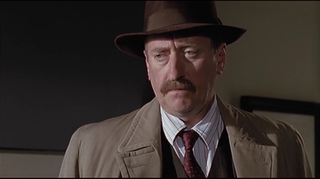
Inspector James Japp is a fictional character who appears in several of Agatha Christie's novels featuring Hercule Poirot.
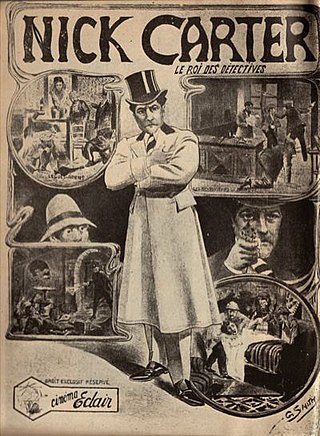
A mystery film is a genre of film that revolves around the solution of a problem or a crime. It focuses on the efforts of the detective, private investigator or amateur sleuth to solve the mysterious circumstances of an issue by means of clues, investigation, and clever deduction. By 2022, mystery films are generally referred to as detective fiction.
Edward Dentinger Hoch was an American writer of detective fiction. Although he wrote several novels, he was primarily known for his vast output of over 950 short stories. He was one of the few America fiction writers of his generation who supported himself financially through short story publication, rather than novels or screenplays.

Le ChevalierC. Auguste Dupin is a fictional character created by Edgar Allan Poe. Dupin made his first appearance in Poe's 1841 short story "The Murders in the Rue Morgue", widely considered the first detective fiction story. He reappears in "The Mystery of Marie Rogêt" (1842) and "The Purloined Letter" (1844).

Detective Inspector G. Lestrade, or Mr. Lestrade, is a fictional character appearing in several of the Sherlock Holmes stories written by Arthur Conan Doyle. Lestrade's first appearance was in the first Sherlock Holmes story, the novel A Study in Scarlet, which was published in 1887. The last story in which he appears is the short story "The Adventure of the Three Garridebs", which was first published in 1924 and was included in the final collection of Sherlock Holmes stories by Doyle, The Case-Book of Sherlock Holmes.
Sherlock Holmes has long been a popular character for pastiche, Holmes-related work by authors and creators other than Arthur Conan Doyle. Their works can be grouped into four broad categories:
Otto Penzler is an American editor of mystery fiction, and proprietor of The Mysterious Bookshop in New York City.

An armchair detective is a fictional investigator who does not personally visit a crime scene or interview witnesses; instead, the detective either reads the story of the crime in a newspaper or has it recounted by another person. As the armchair detective never sees any of the investigation, the reader can attempt to solve the mystery on the same terms as the detective.
Many writers make references to Sir Arthur Conan Doyle's famous literary creation, the detective Sherlock Holmes, and these often become embedded within popular culture. While Holmes exists predominantly in the context of Victorian-era London, he has been mentioned in such outre contexts as the 22nd century or hunting aliens or supernatural enemies. These references are in addition to the innumerable passing references to Sherlock Holmes made in many literary and cinematic works, such as the labeling of a person as a "Sherlock", whether in reference to their intelligence.

The Case of Miss Elliott was Baroness Orczy's first collection of detective stories. It appeared in 1905 and featured the first of her detective characters, The Old Man in the Corner, who solves mysteries without leaving his chair.

The Rivals of Sherlock Holmes is a British anthology mystery television series produced by Thames Television which was originally broadcast on the ITV Network. There were two series of 13 fifty-minute episodes; the first aired in 1971, the second in 1973. The programme presented adaptations of short mystery, suspense or crime stories featuring, as the title suggests, detectives who were literary contemporaries of Arthur Conan Doyle's Sherlock Holmes.
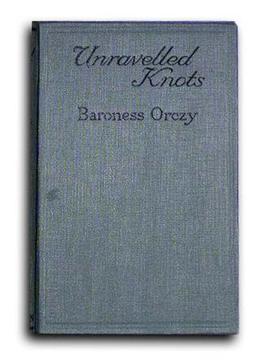
Unravelled Knots, by Baroness Orczy, author of the Scarlet Pimpernel series, contains thirteen short stories about the Old Man in the Corner, Orzy's armchair detective who solves crimes for his own entertainment. This is the last of three books of short stories featuring the detective and follows those in The Old Man in the Corner and The Case of Miss Elliott.
Imagination Theatre is an American syndicated radio drama program airing on AM & FM radio stations across the United States. It features modern radio dramas. The program first aired in 1996. Originally produced by Jim French Productions, the program is now produced by Aural Vision, LLC.
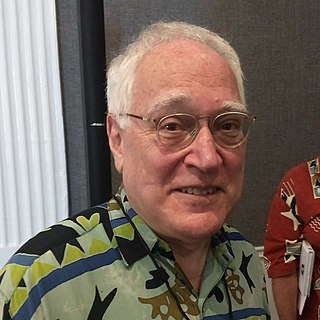
Leslie S. Klinger is an American attorney and writer. He is a noted literary editor and annotator of classic genre fiction, including the Sherlock Holmes stories and the novels Dracula, Frankenstein, and Strange Case of Dr. Jekyll and Mr. Hyde as well as Neil Gaiman's The Sandman comics, Alan Moore's and Dave Gibbons's graphic novel Watchmen, the stories of H.P. Lovecraft, and Neil Gaiman's American Gods.
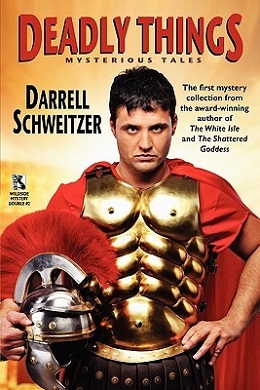
Deadly Things: A Collection of Mysterious Tales / The Judgment of the Gods and Other Verdicts of History is an omnibus of two collections of fantastic historical mystery short stories issued in dos-à-dos format; Deadly Things: A Collection of Mysterious Tales, by American writer Darrell Schweitzer, and The Judgment of the Gods and Other Verdicts of History, by Robert Reginald. It was first published as a trade paperback by Borgo Press/Wildside Press in January 2011 as the second number in its Wildside Mystery Double series. The omnibus's constituent collections were not published separately.












